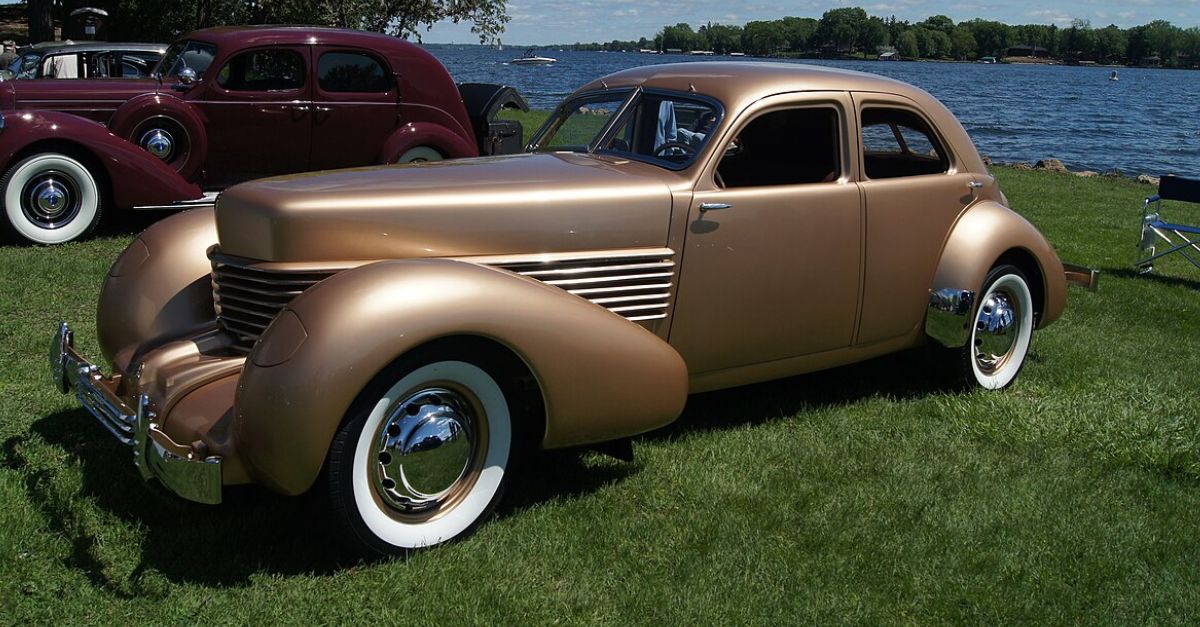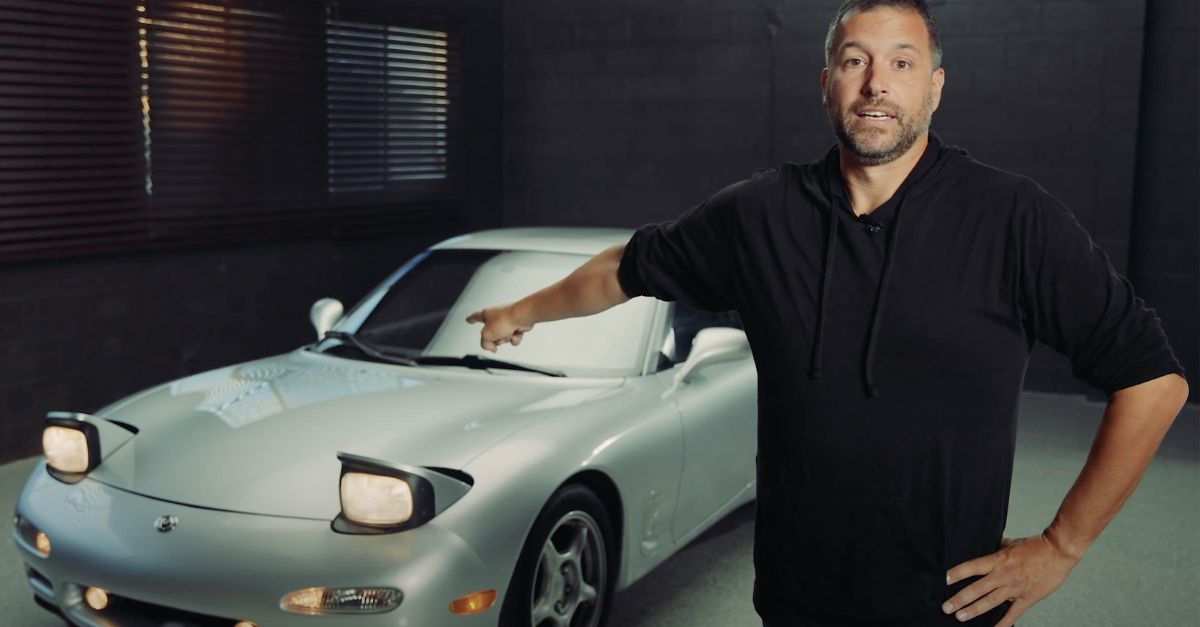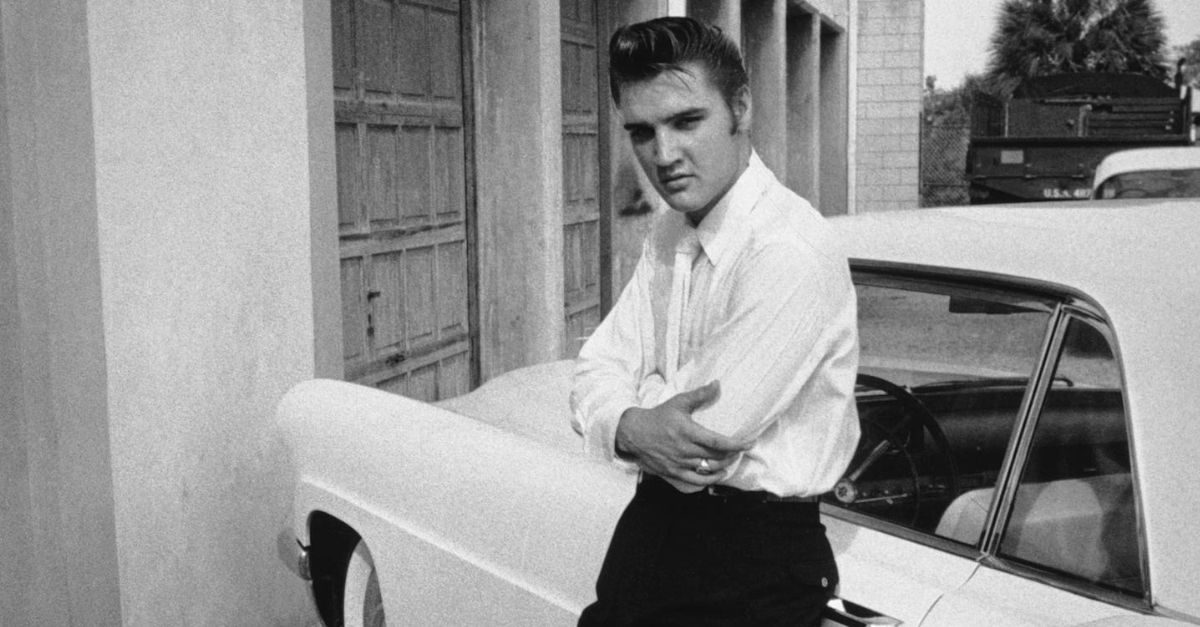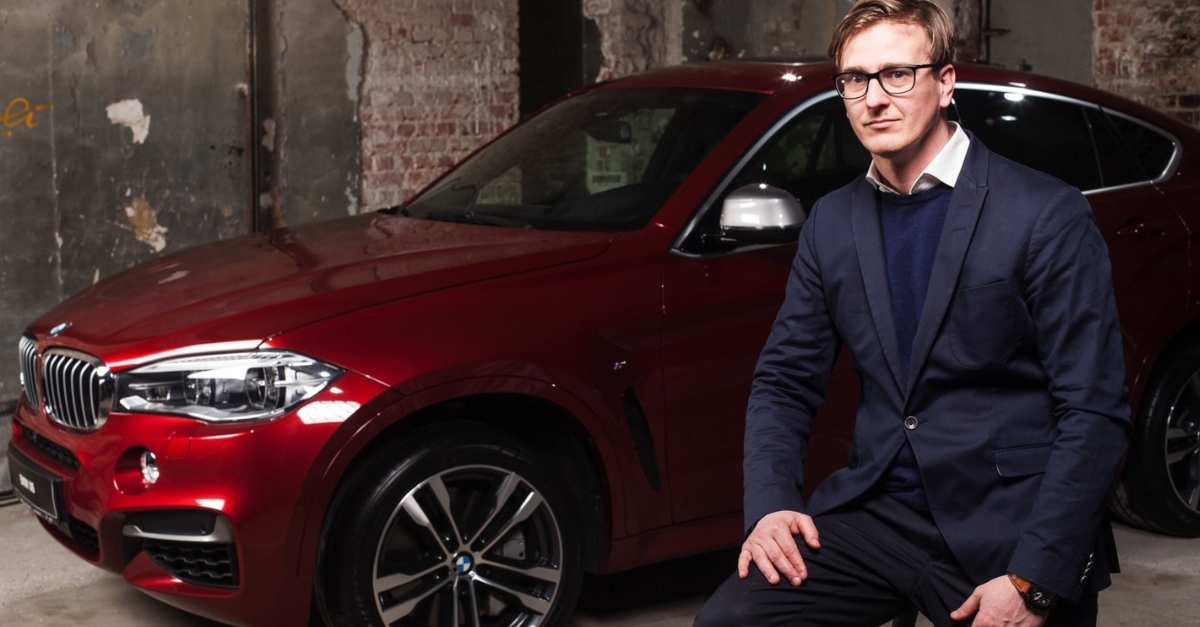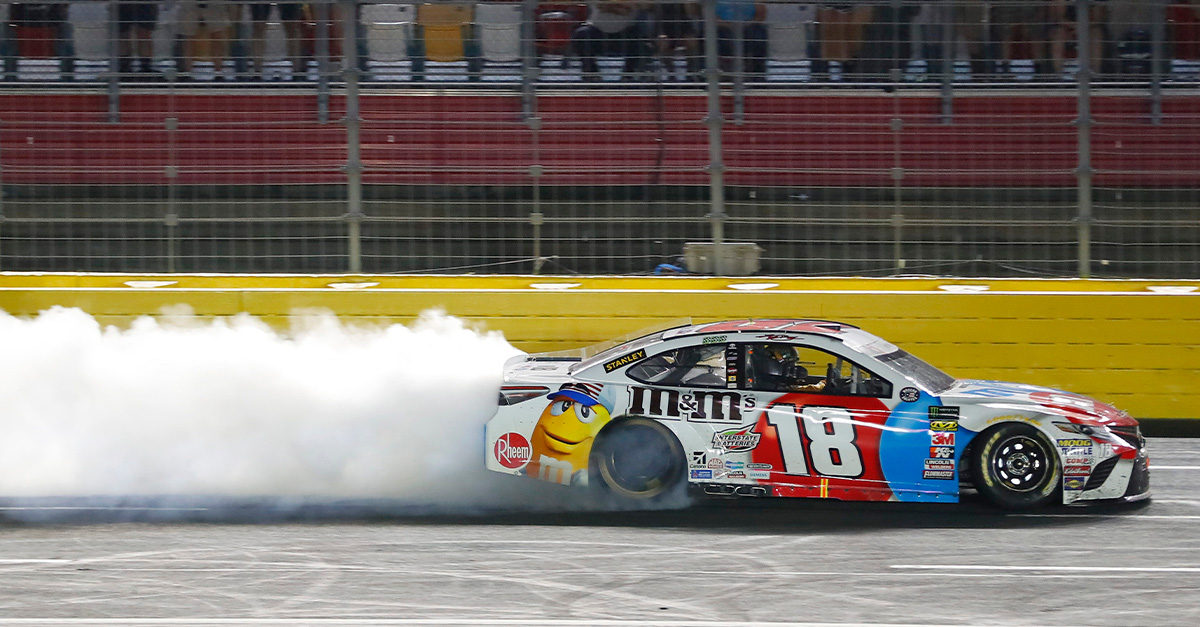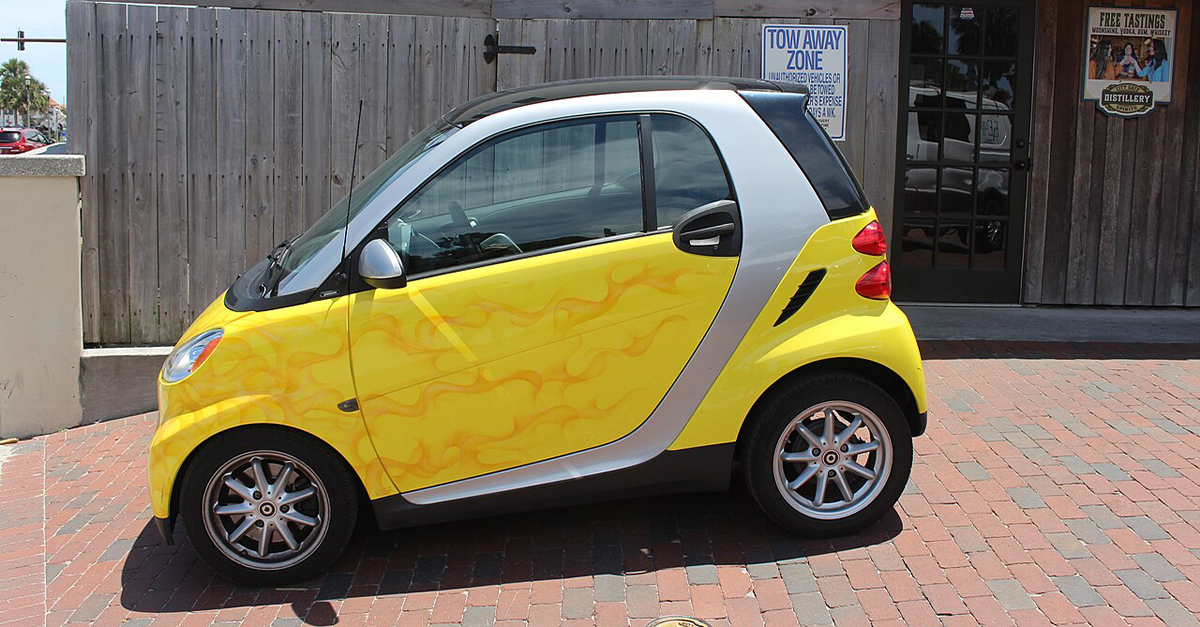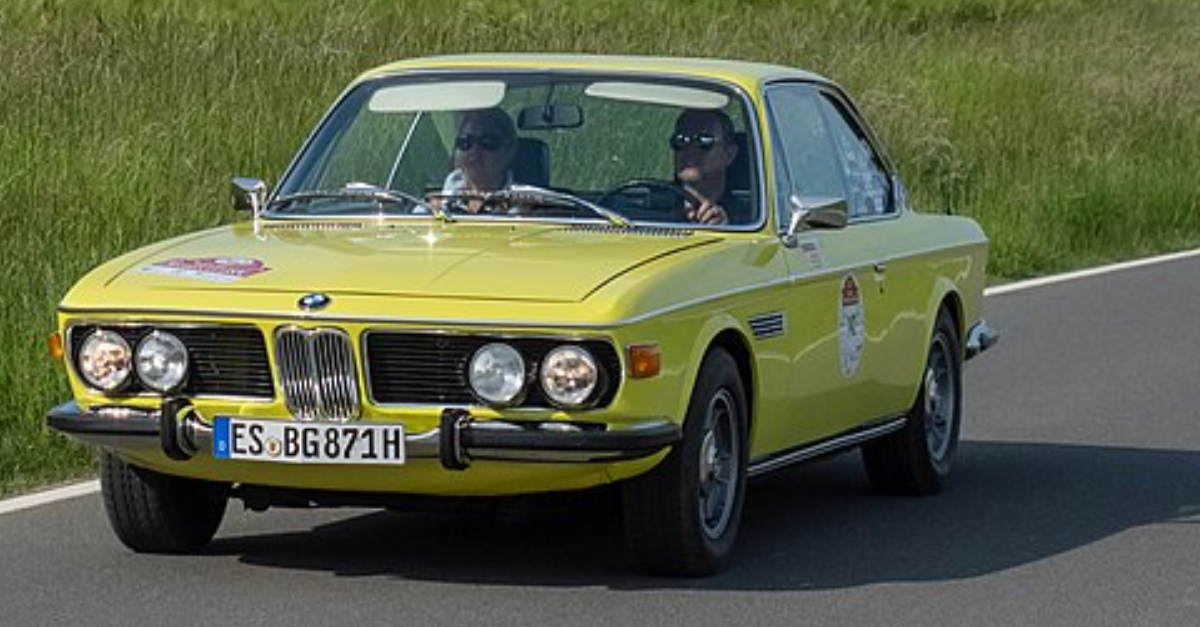American Luxury Cars Through the Decades
They don’t make them like they used to—or do they? From classic icons to modern marvels, American luxury cars keep proving that class is timeless.

Cadillac Eldorado
Released in 1953, this luxury car came out during Cadillac's 50th anniversary. The name "Eldorado" combined two Spanish words that mean "the golden one," which suited the car's high status. Cadillac aimed to stand out with this top-level car with its new designs and special features.
 Greg Gjerdingen, CC BY 2.0, Wikimedia Commons
Greg Gjerdingen, CC BY 2.0, Wikimedia Commons
Power, Style, And All That Flash
With its unique V8 engine and rich interiors, the Eldorado Eldorado blended luxury and style. Designed by visionary Harley Earl, it came with a powerful 331-cubic-inch V8 engine. Its wide, low shape and wraparound windshield made it look impressive and new features made it stand out.
 sv1ambo, CC BY 2.0, Wikimedia Commons
sv1ambo, CC BY 2.0, Wikimedia Commons
Eldorado’s Lasting Legacy
Over the years, Cadillac made changes, switching from rear-wheel to front-wheel drive while also improving fuel use and making it more reliable. Though it wasn’t directly replaced by the Cadillac CTS coupe, people still remember the Eldorado for its bold design and new ideas.
 allen watkin, CC BY-SA 2.0, Wikimedia Commons
allen watkin, CC BY-SA 2.0, Wikimedia Commons
Lincoln Continental
Edsel Ford, head of Ford Motor Company, wanted a stylish car for his vacation, which sparked the creation of the first Lincoln Continental in 1939. With its big spare tire on the back and a smooth, open-top design, it started the era of fancy cars in America.
 Frank Moore Studio, Wikimedia Commons
Frank Moore Studio, Wikimedia Commons
It Brought Comfort Plus Speed
After World War II, Ford's idea for a "luxury" car became popular as Americans started asking for more; they wanted comfort as well as speed. The car had soft leather seats, good air control, and plenty of room, making it great for long trips.
Continental's Impact On Luxury Vehicles
The Lincoln Continental changed American cars with its strong V12 engine, four doors, and spacious, comfortable inside. Other very good features were the power windows, good sound systems, and the well-known spare tire on the back. As a presidential car, it set the standard for luxury cars.
Packard Twelve
The Packard Twelve looked nice and had a lot of power. Its V12 engine got more powerful over time, going from 424 to 473 cubic inches, and it could reach up to 180 horsepower. Made for comfort, the Packard Twelve was quiet and easy to drive.
 JOHN LLOYD, CC BY 2.0, Wikimedia Commons
JOHN LLOYD, CC BY 2.0, Wikimedia Commons
You Could Call It Simple And Smooth
Everything inside the Packard Twelve combined comfort and style beautifully. It had sleek wood accents, plush leather seats, and ample space for a relaxing ride. On the outside, its smooth curves and bold front made it stand out with elegance.
 Alexander Migl, CC BY-SA 4.0, Wikimedia Commons
Alexander Migl, CC BY-SA 4.0, Wikimedia Commons
Packard Equaled Prestige
A favorite among the wealthy, the Packard Twelve was a sign of style and success. President Franklin D. Roosevelt even gave Joseph Stalin an armored version to show its importance. By the 1930s, Packard had many new models, each one better than the last, but the production stopped in 1939.
 Jed, CC BY-SA 3.0, Wikimedia Commons
Jed, CC BY-SA 3.0, Wikimedia Commons
Chrysler Imperial
The Imperial changed a lot over time. It had nice features and different types, like limousines and town cars. Its special hood and front made it look different from other Chrysler cars, showing it was a fancy choice. A big change came in the 1989–1993 models with front-wheel drive.
 AlfvanBeem, CC0, Wikimedia Commons
AlfvanBeem, CC0, Wikimedia Commons
The Imperial Broke Records
In 1926, the Chrysler Imperial made history by driving more than 6,500 miles across the country in just one week, breaking a speed record. It also was the pace car for the 1926 Indianapolis 500, showing how fast it could go.
 Bernard Spragg. NZ, CC0, Wikimedia Commons
Bernard Spragg. NZ, CC0, Wikimedia Commons
Legacy Of The Chrysler Imperial
The Imperial was first a Chrysler car, but it became its own brand in 1954 and was a great hit thanks to its stylish design. Its success opened doors for other luxury cars like the Chrysler LHS, and now the Imperial has a lasting place in car history.
 denizen24, CC BY 2.0, Wikimedia Commons
denizen24, CC BY 2.0, Wikimedia Commons
Cadillac Series 62
Early models had strong inline-eight engines, while later ones had Chrysler's well-known Hemi V8. The Imperial included features like power steering and brakes, which made it easy and more comfortable to drive. Built on a strong frame, it provided a smooth ride for long trips.
 Sicnag, CC BY 2.0, Wikimedia Commons
Sicnag, CC BY 2.0, Wikimedia Commons
Cadillac's Interior Excellence
It had soft leather seats, pretty wood, and comfy fabrics that made it feel warm and welcoming. It focused a lot on small details; features like seats that moved with a button, great sound systems, and controls for the temperature for more comfort.
 sv1ambo, CC BY 2.0, Wikimedia Commons
sv1ambo, CC BY 2.0, Wikimedia Commons
Innovations In Cadillac
Chrysler led the way with new car technology, and the Imperial had many of these firsts. It was very advanced for its time, with features like air conditioning, automatic gears, and power windows. Later, in the 1960s, Chrysler introduced electronic starting and smoother suspensions to make driving easier.
 GPS 56, CC BY 2.0, Wikimedia Commons
GPS 56, CC BY 2.0, Wikimedia Commons
Lincoln Town Car
Lincoln Town Car had a strong V8 engine from Ford that was both powerful and dependable, making it work well in different models. With rear-wheel drive, it kept a classic look, giving a mix of fast speed and steady control for a nice and easy ride.
The Heart Of The Town Car
The Signature Series and Cartier models had seats that could move in six ways. Plus, they had a screen that showed how much gas was left and how long it would take to get to a place, and an innovative keyless entry system to open the driver's doors.
 Greg Gjerdingen, CC BY 2.0, Wikimedia Commons
Greg Gjerdingen, CC BY 2.0, Wikimedia Commons
It Boasted Superior Safety Features
It has a strong body that helps keep people safe if there is a crash. With its smart safety parts like brakes that don't lock, airbags, and later, traction control, it quickly gained popularity. A good choice for people who want a comfy and safe ride.
 Michaelulrich17, CC BY-SA 4.0, Wikimedia Commons
Michaelulrich17, CC BY-SA 4.0, Wikimedia Commons
Oldsmobile 98
In the early 1940s, Oldsmobile wanted to make a top car that combined comfort and new ideas. The Oldsmobile 98 became their answer, a big, fancy car with strong parts and a modern look. It had a smooth engine with varying outputs, with some models producing around 110 horsepower.
 Spantax, CC BY-SA 3.0, Wikimedia Commons
Spantax, CC BY-SA 3.0, Wikimedia Commons
The Mighty Engine
The Oldsmobile 98 had a strong engine that worked well for its time. The earlier models had a straight-eight engine that gave the car the power it needed and still ran smoothly. It also included new features like the Hydramatic automatic transmission, which came out in 1939.
 Greg Gjerdingen, CC BY 2.0, Wikimedia Commons
Greg Gjerdingen, CC BY 2.0, Wikimedia Commons
Its Advanced Features
Its nice design had special features like the "Holiday" hardtop and roomy inside space that made all passengers comfortable. The Autronic Eye was a new feature that automatically dimmed the headlights when other cars came close, showing that Oldsmobile cared about safety and new ideas.
 Alf Helin, CC BY 3.0, Wikimedia Commons
Alf Helin, CC BY 3.0, Wikimedia Commons
Cadillac Fleetwood
Starting during the Great Depression, its popularity came from its strong V8 engine and nice design. Made by Harley Earl, the Series 70 had a unique V-shaped front window and a new grille. The 346 cubic-inch Monobloc V8 produced 135 horsepower, giving both good performance and luxury.
 Greg Gjerdingen, CC BY 2.0, Wikimedia Commons
Greg Gjerdingen, CC BY 2.0, Wikimedia Commons
Fleetwood Through The Decades
Over the years, the Cadillac Series 70 changed a lot in how it looked and worked. The first models from 1936 to 1937 showed off the special styles that became famous for the brand. Later models used a new four-speed Hydramatic automatic transmission, which made driving easier and more enjoyable.
 Sicnag, CC BY 2.0, Wikimedia Commons
Sicnag, CC BY 2.0, Wikimedia Commons
The Lasting Impact Of Series 70
As it was made in the 1980s, the Series 70 evolved to fit what people liked while still looking classic. Even after production ended, fans and collectors kept its legacy alive because it is important in history. Today, the Cadillac Series 70 is more than just a car.
 Rutger van der Maar, CC BY 2.0, Wikimedia Commons
Rutger van der Maar, CC BY 2.0, Wikimedia Commons
Pierce-Arrow Model 1240
Pierce-Arrow quickly became popular for its strong engines and nice looks. Its Model 66 had a big 11.7 L engine, which made it different from cars like Packard. Its creative ads and unique and impressive design made it popular among rich people, such as movie stars and President Taft.
 Greg Gjerdingen, CC BY 2.0, Wikimedia Commons
Greg Gjerdingen, CC BY 2.0, Wikimedia Commons
Fusion Of Power And Plush
Not only did Pierce-Arrow make cars, but they also made special experiences for drivers. Their T-head engine released in 1918 had a unique design with four openings for each part, which gave it a lot of power. These cars were strong and had a nice interior that felt comfy.
 Ermell, CC BY-SA 4.0, Wikimedia Commons
Ermell, CC BY-SA 4.0, Wikimedia Commons
The Game-Changing All-Steel Body
One big moment for the brand was in 1912 when it made the first all-steel body for a car. This made the cars stronger and safer. The brand also became well-known for its strong V12 engines, which gave great power while still driving smoothly.
Stutz Bearcat
Made in the early 1900s, the Stutz Bearcat was more than just a car; it was a sign of freedom and speed. This car was for people who loved to drive fast. It had a light body and a big 390 cubic inch engine that made 60 horsepower.
 Autoworldmobilia, Wikimedia Commons
Autoworldmobilia, Wikimedia Commons
Style And Fame On Wheels
With its simple body, open seats, and famous "dog house" hood, the Bearcat grabbed people's attention. Stars like Elvis Presley made it even more popular, turning it into a well-known car. It won 25 out of 30 races in 1912, making it even more admired.
 Alf van Beem, Wikimedia Commons
Alf van Beem, Wikimedia Commons
The Evolution Of A Classic Icon
Though the first Bearcat went away by the late 1920s, the name came back in the 1970s. People who owned the new models liked the 350 V8 engine, which helped keep the Bearcat relevant. However, the original Bearcat featured a straight-four engine.
 Source144, CC BY-SA 4.0, Wikimedia Commons
Source144, CC BY-SA 4.0, Wikimedia Commons
Cord 812
These cars were known for their front wheels and different shapes, shaping the American car designs. One special feature was the hidden headlights that came out when needed. Designed by Gordon M. Buehrig, the Cord 810 had a unique "coffin nose" shape that didn't have the usual front grill.
 Sicnag, CC BY 2.0, Wikimedia Commons
Sicnag, CC BY 2.0, Wikimedia Commons
It’s Engine Defined Smoothness
Cord 810 and 812 had a 4.7-liter V8 engine that made 125 horsepower. This engine was important because it gave smooth and strong power. In 1937, a new version with a supercharger came out, which made the power go up to 170 horsepower.
 Stephen Foskett, CC BY-SA 3.0, Wikimedia Commons
Stephen Foskett, CC BY-SA 3.0, Wikimedia Commons
Influencing The Future
Only about 3,000 Cord 810 and 812 cars were made, but they changed how cars were designed. These cars had new ideas like hidden headlights and a special look. Production stopped after 1937, but they later inspired luxury cars, like the Oldsmobile Toronado and Cadillac Eldorado.
 Mr.choppers, CC BY-SA 3.0, Wikimedia Commons
Mr.choppers, CC BY-SA 3.0, Wikimedia Commons
Cadillac Seville
As people wanted new things, the brand wanted to attract younger buyers with a smaller, nicer car. This was a brave choice that showed how the market was changing. It was Cadillac's way of redefining what luxury meant. The simple look was inspired by the Rolls-Royce Silver Shadow.
The Firsts Of Fuel Injection
Built for easy driving, it was good on gas, getting 15 miles in the city and 21 miles on the highway. A strong 5.7-liter Oldsmobile V8 engine gave it 180 horsepower. This car was also one of the first American cars to have fuel injection run by electronics.
 Kieran White, CC BY 2.0, Wikimedia Commons
Kieran White, CC BY 2.0, Wikimedia Commons
Seville’s Modern Innovation
Seville had smart systems for controlling the air inside the car. This lets both the driver and passenger choose how warm or cool they want it. It made the ride nicer and showed quality. Over time, the Seville changed but always added new tech while being classic.
 Ryanandlenny, CC BY 3.0, Wikimedia Commons
Ryanandlenny, CC BY 3.0, Wikimedia Commons
Buick Electra
Named after a woman from Texas, Electra Waggoner Biggs, this car became Buick's top model. It was built for a smooth ride and had lots of space inside, making it good for both families and business people. It also had a strong 401 engine with 325 horsepower.
 Greg Gjerdingen, CC BY 2.0, Wikimedia Commons
Greg Gjerdingen, CC BY 2.0, Wikimedia Commons
Inside The Spacious Electra
The Electra looked long and smooth, with a large front that earned it the nickname "deuce and a quarter" because of its length. Inside, it had fancy options like soft leather seats, electric windows, and a shiny dashboard. Some versions, like the Electra 225, added extra touches.
 Ermell, CC BY-SA 4.0, Wikimedia Commons
Ermell, CC BY-SA 4.0, Wikimedia Commons
The ’59 Dashboard And More
Inside the Electra, Buick added some simple but special features. The dashboard on the ’59 model tilted a bit to help block out sun glare, a new idea at the time. Buick made different versions, like the Riviera hardtop, each with a slightly different look and seat.
Lincoln MKZ
The MKZ was made by Ford's luxury team and designed to go against cars like the BMW 3 Series and Audi A4. The MKZ offered an optional 3.0-liter V6 engine in sportier versions, which produced up to 400 horsepower.
 SsmIntrigue, CC BY-SA 4.0, Wikimedia Commons
SsmIntrigue, CC BY-SA 4.0, Wikimedia Commons
MKZ’s Power Options
The MKZ has two types: gas and hybrid. At first, it had a 3.0 L V6 engine. Later, it got a stronger 3.5 L V6 engine that makes 265 horsepower. In 2011, Lincoln added the MKZ Hybrid, which gets 41 miles per gallon in the city.
Lincoln’s First Hybrid Experience
The 2011 MKZ Hybrid was Lincoln's first hybrid car. It saved gas, getting 41 miles for every gallon in the city, and it could offer a short ride on electric power alone. This made it a great choice for those who prefer eco-friendly cars.
Tesla Model S
The Model S gives you the option to equip one motor in the back, two for all-wheel drive, or three for the speedy Plaid versions. Depending on the configuration, its battery can last from 208 to 405 miles, which means you can travel long distances without charging.
 Greg Gjerdingen, CC BY 2.0, Wikimedia Commons
Greg Gjerdingen, CC BY 2.0, Wikimedia Commons
S Is For Sleek
That sleek design gives the Model S a drag coefficient of only 0.24, making it one of the most aerodynamic cars. Tesla has also focused on technology, introducing the Autopilot system in 2015 to show new improvements in how cars drive themselves.
 raneko, CC BY 4.0, Wikimedia Commons
raneko, CC BY 4.0, Wikimedia Commons

